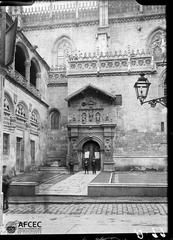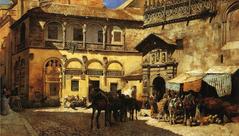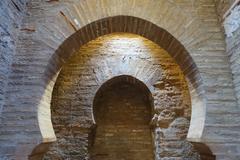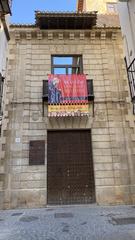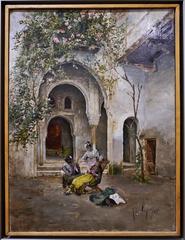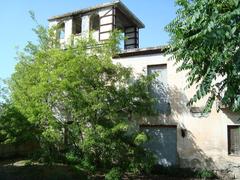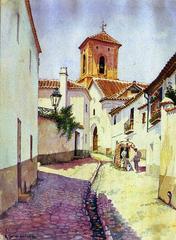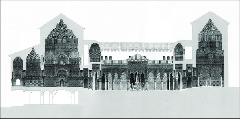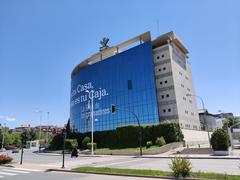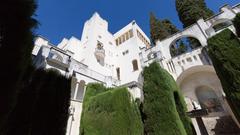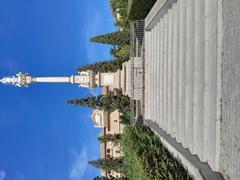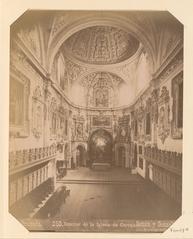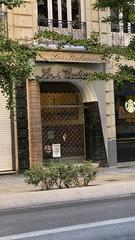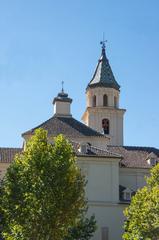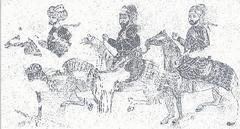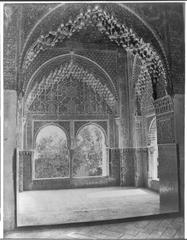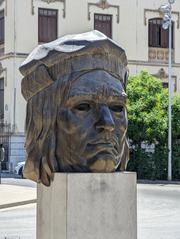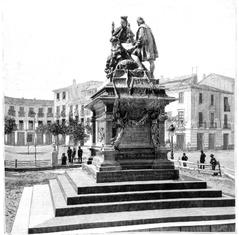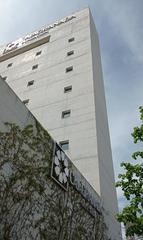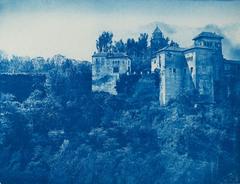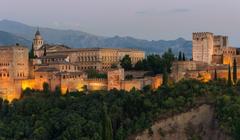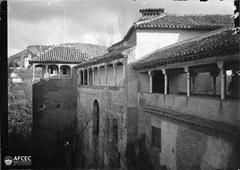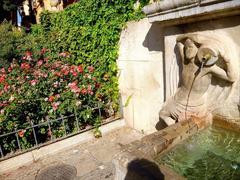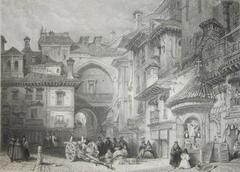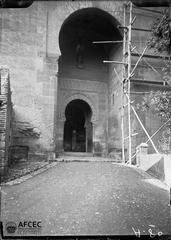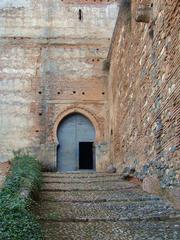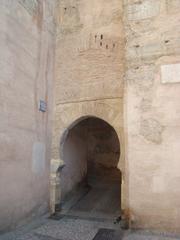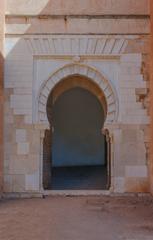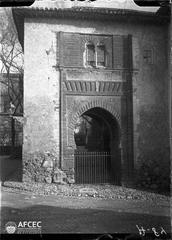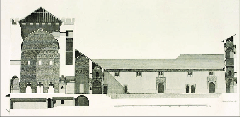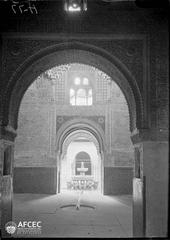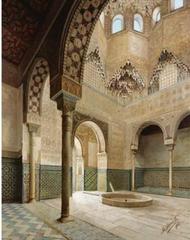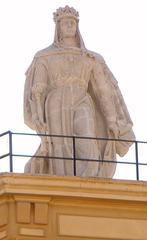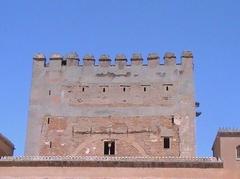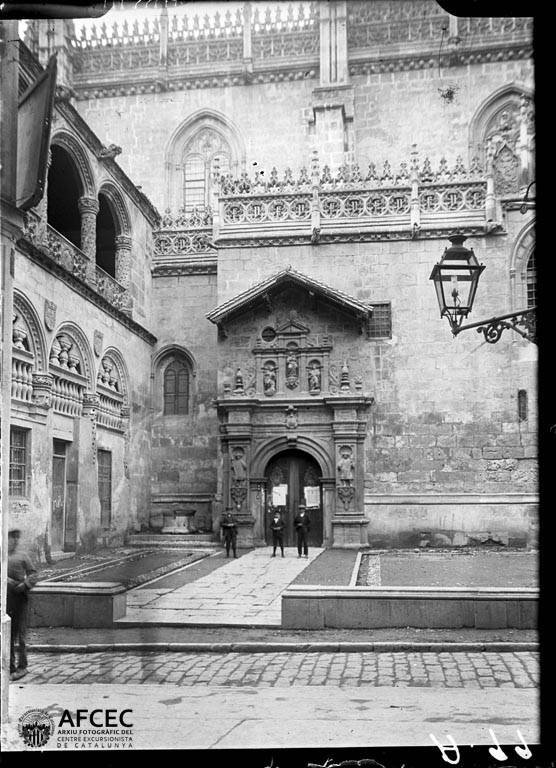
Royal Chapel of Granada: Visiting Hours, Tickets, and Historical Significance
Date: 14/06/2025
Introduction
The Royal Chapel of Granada (Capilla Real de Granada) stands as a monumental emblem of Spain’s rich history, artistic achievement, and evolving cultural identity. Built between 1505 and 1517 on the orders of Queen Isabella I of Castile and King Ferdinand II of Aragon—the Catholic Monarchs—it was designed as their final resting place and symbolizes the end of the Reconquista in 1492, which unified Spain under Christian rule. Its location on the site of Granada’s former Great Mosque not only marks a religious and political transition but also reflects the city’s layered heritage.
This late Gothic Isabelline masterpiece captivates visitors with its striking exterior and lavishly decorated interior, featuring exquisite funerary monuments, an impressive collection of Renaissance art, and a renowned sacristy-museum. The Royal Chapel is centrally located, adjacent to the Granada Cathedral and within walking distance of the Alhambra and the historic Albaicín neighborhood, making it a focal point for any exploration of Granada’s history and culture.
This comprehensive guide covers the Royal Chapel’s historical background, notable features, up-to-date visiting hours, ticket information, accessibility, practical tips, and recommended nearby attractions. Whether you are a history enthusiast, art lover, or traveler, this article will help you experience the Royal Chapel of Granada to its fullest (capillarealgranada.com; ticketsgranadacristiana.com; nomads-travel-guide.com).
Table of Contents
- Introduction
- Historical Background and Significance
- Visitor Information
- Frequently Asked Questions (FAQ)
- Conclusion
- References and Further Reading
Historical Background and Significance
Origins and Royal Decree
The Royal Chapel’s inception was a direct result of the Christian conquest of Granada in 1492, the final victory of the Reconquista. Queen Isabella I, wishing to elevate Granada’s importance as the last Muslim stronghold reclaimed by Christian Spain, signed a royal charter in 1504 in Medina del Campo. This decree established the chapel as the burial site for herself and King Ferdinand II, making it a powerful political and religious statement (capillarealgranada.com; barcelo.com). Choosing Granada as their eternal resting place highlighted the city’s role in Spain’s unification and the birth of modern Spain (en.granada.info).
Construction and Architectural Context
Construction began in 1505 under architect Enrique Egas, with prominent contributors including Juan Gil de Hontañón, Juan de Badajoz el Viejo, and Lorenzo Vázquez de Segovia. Completed in 1517, the chapel is a quintessential example of the Isabelline Gothic style, characterized by verticality, pointed arches, elaborate vaulting, and ornate pinnacles (ticketsgranadacristiana.com). The chapel was initially conceived as an annex to the newly built Granada Cathedral but soon became an independent and distinctive monument (mappingspain.com).
Its location, built atop the city’s main mosque, symbolizes the transformation from Islamic to Christian rule. The plain exterior, in keeping with Queen Isabella’s wishes, contrasts with the richly decorated interior, which boasts some of the finest funerary art in Spain (en.granada.info).
The Catholic Monarchs and Their Legacy
The Royal Chapel is the burial site of the Catholic Monarchs, Isabella I and Ferdinand II, whose reign marked the end of Muslim rule in Spain and the beginning of the Spanish Empire. Their decision to be interred in Granada reinforced the city’s historical importance. The chapel also contains the tombs of their daughter Joanna of Castile (Juana la Loca), her husband Philip I, and their grandson Miguel de la Paz (en.granada.info). In 1521, Emperor Charles V transferred their remains to the chapel, marking a significant event in Spanish royal history (barcelo.com).
Artistic Features and Symbolism
Funerary Monuments
Among the chapel’s most remarkable features are the marble tombs of Isabella, Ferdinand, Joanna, and Philip, sculpted by renowned Italian and Spanish artists Domenico Fancelli and Bartolomé Ordóñez. The tombs are adorned with medallions, statues of saints, and angels, representing some of Spain’s finest Renaissance funerary art (ticketsgranadacristiana.com). In the crypt below, the monarchs’ lead coffins are housed in a solemn, atmospheric space.
Altarpiece and Museum Collection
The main altarpiece, crafted by Felipe Bigarny, exemplifies the Plateresque style and is decorated with scenes from the lives of Christ and the Virgin Mary. The pomegranate motif, recurring throughout the chapel, symbolizes Granada’s integration into Spain and the unity of the Spanish kingdoms (barcelo.com).
The sacristy-museum, established in 1913, displays a remarkable collection of Flemish and Renaissance paintings—including works by Dieric Bouts, Hans Memling, Rogier van der Weyden, and others—along with royal crowns, scepters, prayer books, and liturgical objects (en.granada.info).
Architectural Innovations
The Royal Chapel’s Latin cross plan features a single nave with Gothic ribbed vaults, four side chapels, and a large polygonal apse. The presbytery is separated by an ornate 16th-century iron grille by Bartolomé de Jaén (barcelo.com). Stained glass windows, sculpted bosses, and floral motifs enrich the interior, while the interplay of light and space reflects Neo-Platonic ideals of harmony (en.wikipedia.org).
Visitor Information
Visiting Hours and Tickets
- Monday to Saturday: 10:00 AM – 6:30 PM (last entry at 6:00 PM)
- Sundays and holidays: 2:00 PM – 6:30 PM (last entry at 6:00 PM)
- Closed: January 1, December 25, and some local holidays
- Admission:
- General: €5
- Reduced (students, seniors, disabled): €3
- Children under 12: Free
- Free entry for Granada residents and Sundays after 3 PM
- Tickets: Purchase on-site or online (ticketsgranadacristiana.com). Combined tickets for other Granada monuments are available at a discount.
- Guided Tours: Offered in several languages; advance booking is recommended for a more immersive experience.
Accessibility
The Royal Chapel is wheelchair accessible with ramps and adapted facilities. Due to its status as a historic monument, some areas (such as the crypt) may have limited accessibility. Visitors with specific needs are encouraged to contact the chapel in advance (ticketsgranadacristiana.com).
Travel Tips
- Best Times to Visit: Early morning or late afternoon to avoid crowds.
- Dress Code: Modest attire is recommended as the chapel is an active religious site.
- Photography: Not permitted inside to protect artworks and respect the sacred space.
- Average Visit Duration: 1 to 1.5 hours.
- Facilities: Restrooms available; no large cloakrooms or luggage storage.
Getting There
- Address: Calle Oficios, s/n, 18001 Granada, Spain
- By Bus: Routes 4, 8, 11, 21, 33 (stops: Gran Via 1 or Cathedral); C31, C32, C34 (stop: Plaza Isabel la Católica) (nomads-travel-guide.com).
- On Foot: The chapel is in Granada’s historic center, close to hotels, shops, and other attractions.
Nearby Attractions
- Granada Cathedral: Adjacent to the chapel, renowned for its Renaissance architecture.
- Alhambra Palace: World-famous Moorish fortress, a must-see in Granada.
- Alcaicería Market: Historic Moorish silk market.
- Albaicín District: UNESCO World Heritage neighborhood known for its winding streets and Moorish architecture.
- Plaza Bib-Rambla: Popular for cafes and local shops.
Special Events
The chapel hosts occasional concerts, religious ceremonies, and cultural events. Consult the official website or local tourism offices for current programming.
Interactive Map and Virtual Tour of the Royal Chapel of Granada
Frequently Asked Questions (FAQ)
Q: What are the Royal Chapel of Granada’s opening hours?
A: Monday to Saturday, 10:00 AM to 6:30 PM; Sundays and holidays, 2:00 PM to 6:30 PM. Last admission is 30 minutes before closing.
Q: How much do tickets cost?
A: General admission is €5, with reduced rates for students, seniors, and disabled visitors. Children under 12 and Granada residents may enter free during specified times.
Q: Is the chapel wheelchair accessible?
A: Yes, the main areas are accessible. The crypt may be difficult for visitors with limited mobility.
Q: Are guided tours available?
A: Yes, multilingual guided tours and audio guides are available. Advance booking is advised.
Q: Is photography allowed inside?
A: Photography is generally prohibited to protect the artworks and maintain a respectful environment.
Conclusion
The Royal Chapel of Granada stands as a testament to Spain’s transformative history, art, and religious heritage. Its spectacular Isabelline Gothic architecture, Renaissance funerary monuments, and unparalleled collection of royal artifacts offer a deeply immersive experience. With its central location, accessible visiting hours, and proximity to other major Granada attractions, the chapel is an essential destination for anyone interested in Spanish history and culture.
Plan your journey today and experience the enduring legacy of the Catholic Monarchs at the Royal Chapel of Granada.
References and Further Reading
- Capilla Real de Granada Official History
- Tickets Granada Cristiana - Royal Chapel of Granada
- Nomads Travel Guide: Royal Chapel of Granada
- Barcelo Tourism Guide: Royal Chapel of Granada
- WhichMuseum: Royal Chapel of Granada Opening Hours
- Mapping Spain: Visiting the Royal Chapel of Granada
- Granada.info: Royal Chapel of Granada
- Wikipedia: Royal Chapel of Granada
Alt tags optimized for SEO with keywords such as ‘Royal Chapel of Granada visiting hours’ and ‘Granada historical sites.’
